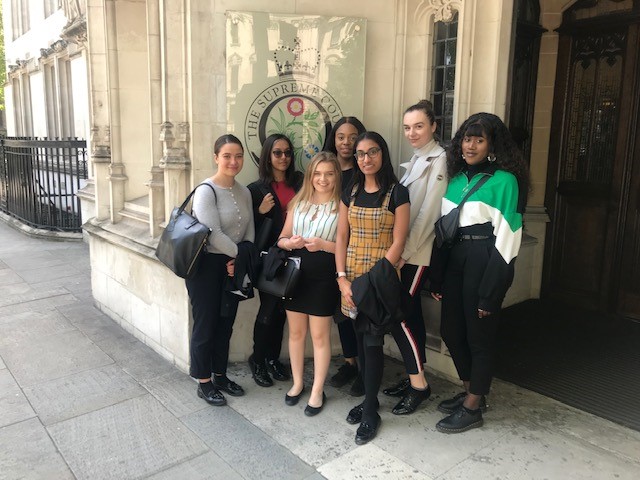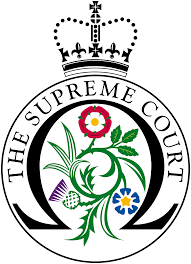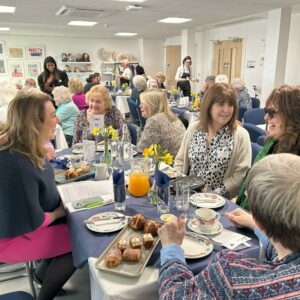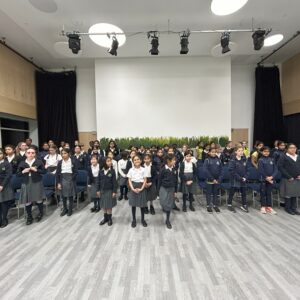News & Events
Lower Sixth visits the Supreme Court of the United Kingdom

Our Pathways mentoring programme provides Lower Sixth with an unparalleled practical opportunity to explore particular job sectors and find work experience whilst making sure that relevant university courses are carefully considered. As such, the Pathways mentoring programme provides a cornerstone of our plan to make sure that Sixth Form students are ‘real-world ready.’ To this end, students have the option of choosing one of the following pathways: law, civil service, medicine, veterinary and dentistry, business, creative industries, media and an open pathway (for those who have yet to find a specific career of interest). Students are free to transfer between different pathways as their career plans inevitably evolve over the Lower Sixth year. Amongst many other things, each ‘pathway’ undertakes a visit to see the particular career sector ‘in action’. This week it was the turn of the Law and Civil Service pathways to explore the Supreme Court of the United Kingdom, the highest court in the UK judicial system and the ultimate arbitrator of civil (and, in some cases, criminal) legal disputes.
 Our students were treated to a tour of the main courtrooms by a guide who explained the inner-workings of the court right down to its crest which comprises symbols from the four parts of the United Kingdom (can you spot them?) surrounded by an omega sign (whose finality—as the last letter of the Greek alphabet—symbolises the finality of the court in the legal/appeals hierarchy). Indeed, we learnt that this crest not only colours the judicial makeup of the court—with Justices from Northern Ireland, Scotland, Wales and England sitting alongside each other—but also makes multiple appearances on the carpet throughout the building! The students were given an overview of the court’s relatively short history; in fact, this year marks the tenth anniversary of the symbolic move of the court from the House of Lords to the former Middlesex Guildhall on the opposite side of Parliament Square. We learnt that the Justices always sit in odd numbers so that a majority can be reached; we were treated to the background of Baroness Hale of Richmond, the first female President of the Court as well as details of some of the more famous appellant cases it has heard such as R (Miller) v Secretary of State for Exiting the European Union (the ‘Brexit case’ led by Gina Miller) and Lee v Asher’s Baking Company (the so-called ‘gay cake row’).
Our students were treated to a tour of the main courtrooms by a guide who explained the inner-workings of the court right down to its crest which comprises symbols from the four parts of the United Kingdom (can you spot them?) surrounded by an omega sign (whose finality—as the last letter of the Greek alphabet—symbolises the finality of the court in the legal/appeals hierarchy). Indeed, we learnt that this crest not only colours the judicial makeup of the court—with Justices from Northern Ireland, Scotland, Wales and England sitting alongside each other—but also makes multiple appearances on the carpet throughout the building! The students were given an overview of the court’s relatively short history; in fact, this year marks the tenth anniversary of the symbolic move of the court from the House of Lords to the former Middlesex Guildhall on the opposite side of Parliament Square. We learnt that the Justices always sit in odd numbers so that a majority can be reached; we were treated to the background of Baroness Hale of Richmond, the first female President of the Court as well as details of some of the more famous appellant cases it has heard such as R (Miller) v Secretary of State for Exiting the European Union (the ‘Brexit case’ led by Gina Miller) and Lee v Asher’s Baking Company (the so-called ‘gay cake row’).
After the tour, we went to a question and answer session with two Judicial Assistants (whose research supports the Justices): an opportunity not ordinarily available to school groups. Our students asked a rich set of questions which ranged from the specifics of studying law at university and the ethnicity of certain legal issues to the practicalities of the separation of the legal and government systems. Our students (and the accompanying staff) came away inspired by what they saw and heard. Perhaps, just perhaps, one or more of our number will be appearing as barristers, solicitors or even Justices of the Supreme Court in the not-so-distant future!
Dr Purvis
More news
Awards and Celebration
GDST Creative Writing Year 12 & 13 – highly commended
Co-curricular



